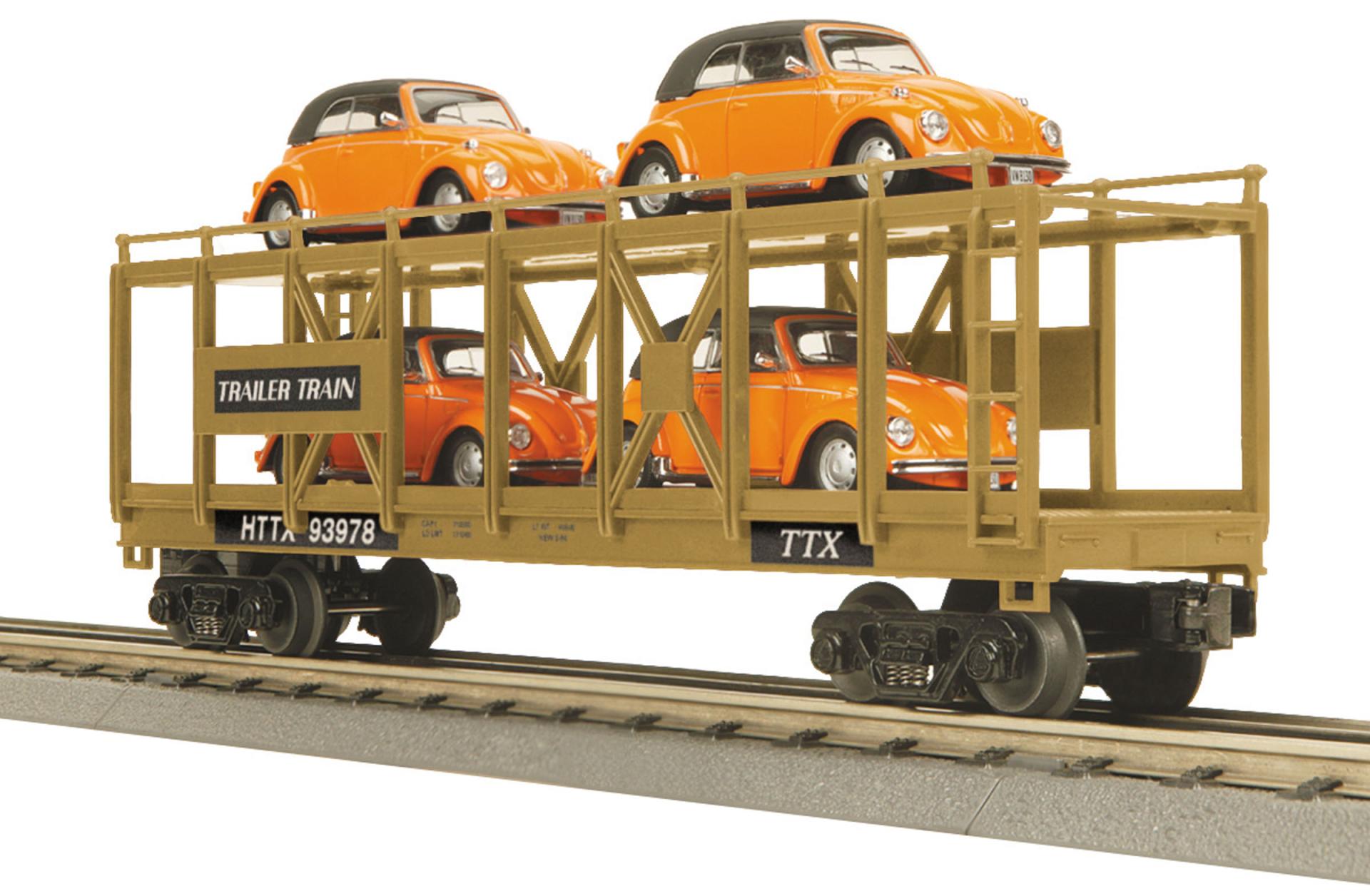
TTX O Gauge RailKing Auto Carrier Flat Car w/(4) VW Beetle Convertibles
Overview
A major leap forward came in the 1960s, with the advent of autoracks, or auto carriers: racks added to flatcars to hold two or three layers of autos, packing up to 15 or more vehicles onto a single flatcar. Although this revolutionized auto transport, the idea was not new. In 1923, when the Buick Motor Company's production of cars overwhelmed the railroad's capacity to ship them out, the Grand Trunk Western devised double-deck racks on 61' log cars to cram nine Buicks onto every flat.
A strategy that made '60s-era autoracks more affordable to railroads was split ownership. The flatcar was often provided by a leasing company while the railroad supplied the automobile rack. This led to the twin heralds found on several of our M.T.H. models of these cars, with a railroad emblem on the rack and another company's name on the flatcar. While the autoracks were widespread into the late 1970s, their open construction left autos exposed to weather, vandalism, and hobos looking to hitch a ride. By the 1980s, the cars acquired roofs and sides and evolved into the enclosed autoracks in general use today.
High quality, traditionally sized RailKing Freight Cars provide detailed bodies and colorful paint schemes for the O Gauge railroader. MTH makes an enormous variety of RailKing Freight Cars, including many different car types and roadnames. No matter what era or part of the country you are modeling, RailKing is sure to have something for you.
